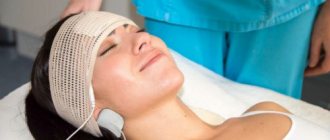According to statistics, the fair half of humanity suffers from depression twice as often as the stronger half. Moreover, every fourth woman has experienced deep depression at least once in her life.
- The essence of depression
- Symptoms of depression in women
- Signs of mania
- Symptoms of mania in women
- Reason for women's predisposition
- Additional risk factors
- Is depression genetic?
- Differences in depression in women
- Depression during pregnancy
- Does depression affect pregnancy?
- Does pregnancy affect the development of depression?
- Tips for pregnant women to relieve symptoms of depression
- Treatment of depressive disorder in pregnant women
- Treatment of postpartum depression
- Depression and menopause
- How to relieve menopause symptoms?
- Treatment of depression in women
- Additional materials. Self-diagnosis tests
The essence and definition of depression
Depression is a common, severe mood disorder. It becomes the cause of sadness, a feeling of helplessness and doom, a state of helplessness that was previously not characteristic of a person. Depression can take a moderate form with symptoms such as apathy, lack of appetite, problems falling asleep, decreased self-esteem, and chronic fatigue. Sometimes depression manifests itself in a more serious form. It can last for several months or several years, disrupting the normal life and activity of a woman, her ability to work, as well as relationships with other people. Depression is also strongly associated with the risk of divorce.
Symptoms of masked depression
When interviewed during the collection of a preliminary history, a patient suffering from this type of mood disorder describes, first of all, the most important, in his opinion, symptoms of a physical nature, which do not add up to a clear clinical picture of any somatic disease.
These masking signs may be of the following nature:
- disturbance of the rhythms of day and night - insomnia at night and drowsiness during the day, prolonged sleep (hypersomnia);
- vegetative and somatic disorders - dizziness, neurocircular dystonia, cardioneurosis, anorexia or bulimia, irritation and impaired intestinal motility, constipation and diarrhea, flatulence, neurodermatitis;
- persistent algia (pain syndromes) of unknown origin - headaches, pain in the heart (cardialgia), tachycardia, fluctuations in blood pressure, abdominal pain (abdominalgia), neuralgia and rheumatic pain;
- sexual dysfunctions;
- changes in behavior in society - reactions such as hysteria, the formation of alcoholism, drug addiction, changes in character.
Based on the totality of symptoms (syndrome), there are two main types of atypical depression.
Manifestations of the agripnic variant of the disease are nightmares and, as a result, intermittent sleep, early awakening with a painful rise, requiring significant volitional efforts.
The totality of symptoms of the anorectic form is lack of appetite up to aversion to food, significant weight loss, morning sickness, constipation.
Symptoms of depression in women
- The mood is predominantly sad, which can be briefly described with the word “none.”
- Increased anxiety.
- Lack of interest in any type of activity, including entertainment.
- Decreased libido and sexual activity.
- Feeling restless, irritable, fussy, or tearful.
- Feelings of guilt, hopelessness, futility, hopelessness, helplessness, a general pessimistic attitude.
- Changing sleep patterns: a woman sleeps either much more or much less than before.
- Changes in appetite: a significant increase and the woman gains weight, or a radical decrease and she loses weight.
- Decreased energy level (possibly with increased appetite), constant fatigue, and a feeling of some “slowness.”
- Suicidal thoughts and attempts.
- Difficulty concentrating, difficult to remember anything, difficult to make decisions.
- Other multiple symptoms that cannot be treated with traditional methods, such as persistent headache (possibly also migraine), digestive problems, chronic pain of unknown origin.
Since the above symptoms can characterize depression not only as a separate phenomenon, but also as a gradation of bipolar disorder, let us consider the signs of the opposite gradation - mania.
Major depressive disorder
This is the condition most often referred to when people talk about clinical depression. For a person to be diagnosed with major depressive disorder, they must experience the following symptoms for at least two weeks:
- Bad mood.
- Loss of interest in work, previously favorite activities, communication with other people.
- Constant fatigue.
- Sleep disturbance.
- Feelings of guilt, self-condemnation.
- Weight loss.
- Difficulty concentrating.
- Thoughts about death, suicide.
Major depressive disorder is treated with antidepressants in combination with psychotherapy.
Signs of mania
Bipolar disorder is characterized by the fact that mood can change sharply, occupying completely opposite poles - from mania to depression and vice versa every couple of days, weeks or months. In this case, mania is characterized by a highly energetic state and high spirits. But even if the state of mania may not cause concern due to its inherent positive symptoms, it requires immediate psychotherapeutic help, because at any time it can change to a completely opposite state.
Symptoms of mania in women include:
- Dominance of high spirits, previously not characteristic of a woman.
- Frequent irritability or intolerance.
- Low need for rest and sleep.
- Generating numerous big ideas.
- Increased need for communication.
- Jumpy formulation of thoughts.
- Excessive, previously unusual, physical activity, including sexual activity (increased libido).
- Noticeably increased overall energy level.
- Lack of judgment, which sometimes leads to undue risk and behavior.
- Inappropriate behavior in public.
What is the reason for women's predisposition to this disorder?
In childhood and pre-puberty, the susceptibility to depression in both sexes is the same. But upon reaching puberty, the risk of this disorder in girls increases significantly and, compared to boys, it occurs almost twice as often.
Most experts tend to consider the cause of such “injustice” to be hormonal changes that occur in the female body throughout life. Changes in hormonal levels become obvious during puberty, pregnancy, premenopause and menopause, as well as in connection with the birth of a child and breastfeeding. Added to this are monthly fluctuations in hormonal balance, which sometimes provoke the occurrence of premenstrual syndrome (PMS) and premenstrual dysphoric disorder (PMDD), a serious condition similar in nature to depression and a group of anxiety disorders.
Dysthymia
A synonym for this term is “chronic depression.” Typically, its symptoms are milder than those of major depressive disorder, but they persist much longer - at least 2 years.
Typical symptoms of dysthymia:
- Sleep disturbance.
- Poor appetite or, on the contrary, constant overeating.
- Constant feeling of fatigue.
- Low self-esteem.
- Feeling of hopelessness.
- Difficulty concentrating and making decisions.
If a person suffers from chronic depression since childhood, he often perceives this as the norm, as a feature of his character, and does not seek help from doctors.
Additional risk factors
Among the factors that increase the risk of depression are biological (fertility, heredity), characteristics of interpersonal interaction and specific personal characteristics. In addition, if a woman is exposed to increased stress for a long time or is a single mother, this further increases her chances of developing symptoms of depression.
Additional risks include:
- Family experience of mood disorders.
- The presence of a mood disorder in a woman in adolescence or early youth.
- Loss of a parent in childhood.
- Loss of family, friendly support or threat thereof.
- Intense or prolonged psycho-emotional stress (possibly dismissal, problematic interpersonal relationships, separation or divorce).
- Violence experienced in childhood or recently: physical and/or sexual.
- Certain medications.
In addition, some are susceptible to developing postpartum depression, as well as so-called seasonal affective disorder, depending on the time of year.
Atypical depression
Unlike classic depression, in which the mood is constantly depressed, with this form of the disease it changes depending on the situation. The emotional state is unstable, it improves with positive events, but then quickly deteriorates with the next failure. Other possible symptoms:
- Increased appetite.
- Feeling of heaviness in the arms and legs.
- The patient sleeps longer than usual.
- Increased sensitivity to criticism.
Antidepressants usually help with this type of depression.
How is depression different in women?
- It appears earlier, lasts longer, relapses occur more often, is more associated with stressful life circumstances, and is subject to seasonality.
- Female representatives are more predisposed to self-flagellation, experiencing feelings of guilt and are prone to making suicidal attempts.
- Female depression is more often accompanied by various kinds of anxiety disorders and eating disorders (food addiction, psychogenic overeating, nighttime overeating, bulimia (often with a cyclical connection), less often anorexia).
Depression during pregnancy
It is assumed that the expectation of the imminent arrival of a child should be directly correlated with a sense of well-being, which in turn protects a woman from psychological problems. But in practice, it turns out that pregnant women are just as likely to be depressed as other women.
Factors that increase the risk of developing depression during this period include:
- Having depression, severe PMS or PMDD before pregnancy.
- Age of the pregnant woman: the older the woman, the lower the risk.
- Social withdrawal.
- Deprivation of social and friendly support.
- Marital quarrels.
- Uncertainty about the desirability of having a child.
Main signs of depression
People often ask the following question: “What is depression, and how to deal with it?” It is already known that depression is a complex and serious disease that manifests itself due to the predominance of psychological trauma.
When considering how to combat the disease, it is necessary to first pay attention to the symptoms of depression, since it is the first sign of the disease that makes it clear about the localization of a particular type of ailment in a person. Symptoms of depression are quite varied and manifest themselves differently in everyone, depending on the type of predominant ailment. The main signs of the symptoms of the disease are:
- anxious feelings;
- feelings of guilt or despair;
- decreased self-esteem;
- self-isolation.
Symptoms in women appear more clearly than in men, which is associated with the physiological characteristics of the brain. A man can be depressed for many years and hide it. In women, the picture of symptoms is visible quite clearly, so if the first signs of localization of the disease are detected, then it is necessary to consult a doctor immediately.
More and more people are interested in information about the ways of transmission of AIDS. Many people have heard that infection occurs during sexual intercourse, but the level of awareness about another method of infection is low. Read more in the article: “Is AIDS transmitted through saliva?”
Symptoms of the disease affect not only the emotional sphere, they also manifest themselves in the form of sleep disturbances and insomnia. During the day, the patient can sleep through the night, but the dreams are short and filled with frequent awakenings and phobias. On the nutrition side, the picture can develop according to two scenarios:
- The patient may lose his appetite completely, and the body begins to quickly become exhausted, which leads to weight loss.
- Appetite may increase, and at the same time the patient begins to overeat, eat at night and actively gain weight. As the disease progresses, physical pain appears in the area of the heart, abdomen, and sternum.
Depression often leads to constipation. Against the background of a decrease in energy reserves, the body quickly becomes overtired during both physical and mental stress. The first sign that is characteristic of the emergence of psychological and emotional malaise is a problem in sexual life, which the sexual partner will understand on the very first day.
Experts are divided on whether it is possible to have sex with cystitis. Most of the unpleasant symptoms are present in the woman throughout the entire treatment. Read more in the article: “You can have sex with cystitis.”
Depression in children is an emotional and mental disorder that leads to behavioral changes. A year after recovery, 25% of children experience a relapse of depression, in 40% it appears after two years, in 70% after five years.
Does depression affect pregnancy?
The following trends are highlighted:
- The insidiousness of this disorder is that a person stops taking care of himself. For a pregnant woman, this may be critical. Pregnant women suffering from depression are less likely to follow doctors' recommendations, sleep and rest patterns, physical activity and a balanced diet.
- This disorder can push a woman to drink alcohol and smoke tobacco, which negatively affects both the health of the expectant mother and her baby.
- Worsening depression may interfere with bonding and bonding with the child.
On the other hand, pregnancy also affects the course of depression:
- An pregnant woman's increased sensitivity to stressful circumstances and their more severe experience may contribute to the development of a depressive disorder or a worsening of existing symptoms.
- Without appropriate therapy, depressive symptoms do not disappear with childbirth, but the name changes - postpartum depression. To assess the signs of depression, take the Test: Postpartum Depression (it is also aimed at pregnant women).
Depression
Atherosclerosis
Thyrotoxicosis
Rheumatism
Arthritis
Gastritis
16049 January 30
IMPORTANT!
The information in this section cannot be used for self-diagnosis and self-treatment.
In case of pain or other exacerbation of the disease, diagnostic tests should be prescribed only by the attending physician. To make a diagnosis and properly prescribe treatment, you should contact your doctor. Depression is one of the most common mental disorders.
The criteria for a depressive episode are a daily decrease in mood that occupies most of the day, significantly different from the person’s usual state, for two weeks or more, an obvious decrease in interest and pleasure in activities usually associated with positive emotions, increased fatigue and motor retardation.
To the above symptoms you can add the following:
- decreased attention;
- loss of appetite;
- insomnia;
- decreased self-esteem;
- thoughts about one's own guilt;
- suicidal thoughts.
Types of depression
- Psychogenic depression develops as a reaction to traumatic events.
- Endogenous depression is caused by changes in the levels of hormones and neurotransmitters.
- Exogenous depression occurs with various somatic diseases, as a result of brain damage and with the use of psychoactive substances.
- Hidden (“masked”) depression manifests itself in the form of a somatic illness.
Causes of depression
The greatest difficulty is in diagnosing hidden, otherwise latent, depression.
When diagnosing it, it is important to exclude the presence of any organic diseases. After all, such depression has many manifestations, with which patients turn to general practitioners, cardiologists, neurologists, etc. However, examinations do not reveal any organic pathologies.
The most common form of such depression is cardiac. Patients feel excruciating pain in the heart area, palpitations, weakness, dizziness, but when undergoing a cardiac examination, no abnormalities are detected.
The abdominal variant is also common, in which pain occurs in any part of the abdomen, nausea, and loss of appetite.
The skin variant is characterized by redness and changes in skin sensitivity, the appearance of eczematous rashes, increased sweating, itching, often local (for example, itching of only the palms or legs).
The causes of the development of exogenous depression can be traumatic brain injuries, neuroinfections, tumor and vascular diseases of the brain (atherosclerosis, strokes and cerebral infarctions), and atrophic processes.
Psychogenic depression occurs after exposure to psychological trauma, which is an individually significant stressful event.
Endogenous depression occurs as an independent disease, and can also accompany bipolar disorder, which is characterized by alternating phases of mania, depression and mental stability.
There are frequent cases of depressive disorders in people who use psychoactive substances and alcohol.
Somatic diseases that can lead to depression are divided into groups.
- Cardiac pathologies: myocardial infarction, arterial hypertension, chronic heart failure, arrhythmias.
- Endocrine disorders: diabetes mellitus, hypo- and hyperthyroidism.
- Gastrointestinal disorders: liver cirrhosis, colitis, etc., leading to impaired absorption and detoxification of harmful substances.
- Rheumatic diseases: rheumatism, systemic connective tissue lesions, arthritis, etc. are accompanied by severe pain and require long-term treatment.
- Neoplasms, especially malignant ones.
Postpartum depression is worth considering separately.
The development of this condition is facilitated by features of the postpartum period: hormonal changes in the body occur (the concentration of female sex hormones decreases), and the volume of circulating blood decreases.
Deterioration in health after childbirth, problems with breastfeeding, and changes in appearance have a significant impact. Depression develops in 10% of primiparous women from the 2nd to the 6th month after birth and is manifested by symptoms characteristic of all depression: motor retardation, worsening mood, tearfulness, changes in appetite. A feature of postnatal depression is a decrease in a woman’s interest in the child, irritation from the need to care for him. It is very important to diagnose this condition in a timely manner and undergo a course of treatment, since it is the child who suffers first.
Which doctors should I consult if I have depression?
In most cases, with depression, they seek help from a doctor, , , , depending on the cause of the complaints. Many patients avoid seeking help from a psychiatrist or psychologist. However, specialists in the field of psychiatry and psychology not only diagnose the causes of depression, but also help to cope with the depressive state.
Diagnosis of depression
A doctor of any specialty can suspect depression. However, diagnosis of depression is possible only by a psychiatrist who will conduct a survey and analyze the data obtained. To exclude organic pathology in masked and exogenous depression, depending on the symptoms, the doctor may prescribe a set of laboratory and instrumental examinations:
- clinical blood test;
Tips for pregnant women to relieve symptoms of depression
The preparatory efforts associated with the birth of a baby are energy-intensive and require significant effort and time. But the health of the expectant mother should be given priority. Try not to get hung up on the fact that everything has to be perfect, cut down on current, routine work and do what contributes to your relaxation and calm. Discussing any issues that concern you with your loved ones will help you establish peace of mind and have a beneficial effect on your well-being. Maintain trusting relationships with friends, partner, and loved ones.
If you feel that you are unable to cope on your own, seek professional help from a psychotherapist.
What to do if you are depressed?
- Do not isolate yourself, maintain relationships with your loved ones, friends and family doctor.
- Do not make fundamental life decisions (for example, about divorce, changing jobs, etc.). During a period of depression, you will not be able to correctly assess the situation. Therefore, your solution most likely will not be ideal for you.
- Don't blame yourself for being depressed. You are not the cause of it.
- Don't be disappointed by the slow improvement from treatment. Be patient with yourself.
- Do light exercise daily. This will give you energy and improve your overall well-being.
- Eat properly and regularly, do not disturb your sleep patterns.
- Visit your doctor regularly and carefully follow his recommendations.
- Set small goals for yourself, because you may not have enough energy for big ones.
- Encourage, pamper yourself.
- Try to get as much information as possible about depression and how it can be treated.
- Contact your GP immediately if you begin to think about suicide.
How safe are antidepressants?
Be sure to tell your doctor if you are pregnant or planning to become pregnant. Some antidepressants pass into breast milk, check with your doctor if you are nursing a baby and taking antidepressants. Taking hormonal contraceptives and hormone replacement medications together with antidepressants is safe in most cases. Often taking hormonal medications helps treat depression.
Do antidepressants have side effects?
Like most drugs, antidepressants can have side effects. However, not all people taking antidepressants experience side effects. Potential side effects depend on the type of antidepressant. If you think that you have experienced any unpleasant symptoms after taking antidepressants, consult your doctor.
What are the positive effects of antidepressants?
Your sleep and appetite will improve, and you will feel more energetic. Thoughts about the future will be more positive. You will feel less sad and make decisions more easily. You will feel the first symptoms of improvement after 1 week of use, but the full effect occurs after 6-8 weeks of regular use of antidepressants.
Treatment of depressive disorder in pregnant women
In this case, the treatment plan and the chosen strategy must be carefully thought out, and the risks for the developing fetus and the pregnant woman must be weighed. Only a psychotherapist can effectively cope with such a task, who will either prescribe medications to get results as quickly as possible without the risk of harming the child, or recommend special psychotherapeutic methods for a quick and most reliable result.
Remember, you cannot select and self-prescribe medications, especially for a pregnant woman. This should be done by a doctor based on the results of diagnosing a particular case.
Treatment of postpartum depression
It is treated in the same way as any other form of depression, which involves the use of psychotherapeutic methods and/or medications. If a woman is breastfeeding during therapy, this should be reported to the attending psychotherapist in order to draw up a correct treatment plan. Since it is assumed (not yet confirmed) that the active substances included in antidepressants may pass into breast milk in small quantities, the doctor will need to weigh the possible risks and benefits of using antidepressants and, perhaps, focus more on non-drug therapy for depression.
Since the birth of a child and, in connection with this, a change in lifestyle can affect both the psychological well-being of the woman herself and her relationship with her husband, it is recommended to pay attention to the recommendations of psychologists on how to improve relationships with her husband after the birth of a child, as well as what prejudices the mother should get rid of so as not to drive yourself into depression.
Psychotic depression
This form of the disease is characterized by the most severe, psychotic symptoms:
- Hallucinations: the patient sees, hears and feels things that are not really there.
- Delusions are false beliefs. For example, a person may believe that someone is stalking him, that everyone is constantly talking bad about him behind his back, although this is obviously not the case, and there are no objective reasons for such thoughts.
- Paranoia – a person believes that everyone around him is trying to harm him, and constantly expects a “trick” from those around him.
In such cases, antidepressants must be combined with antipsychotic drugs.
There are other forms of depression, not all of them are well studied, but in most cases doctors know how to help. Trust the experienced specialists of the Cordia clinic. Contact us .
Depressive disorder and menopause
By analogy with other periods of a woman’s life, during menopause there is a close relationship between hormonal levels, physical manifestations and emotional reactions and experiences. Among the physical symptoms, the most common are hot flashes or chills, excessive sweating, dry skin, excess weight gain and a number of others. Mental symptoms include irritability, sleep disturbances, tearfulness, headaches and migraines. These symptoms, together with increased anxiety, cause depression. Most often, menopause begins after 45 years of age, but due to the characteristics of a particular organism (for example, surgical removal of the ovaries), it can begin earlier.
How can a woman cope with menopausal symptoms?
- Eat healthy foods and maintain moderate but regular exercise (workout is effective in controlling anxiety levels).
- Get involved in a creative activity, find an interesting hobby that will guide you towards pleasant achievements.
- Find a technique that can balance your mental state: this could be meditation, certain relaxation breathing techniques, yoga (other techniques, strategic self-help for anxiety).
- Try to keep the air in the bedroom at a cool temperature, which will help prevent sweating during sleep and, as a result, sleep disturbances.
- Seek emotional support from friends, close family, or professional help as needed.
- Maintain family relationships, communicate in different interest groups, strengthen friendships with other people.
- Follow your doctor's instructions regarding taking vitamins, dietary supplements, minerals and other medications prescribed to you.
- During periods of frequent hot flashes, give preference to loose-fitting clothing.
Hidden depression
Hidden depression (dull, erased, latent, depression without depression, somatized, pseudopsychosomatic form of atypical mental depression, missed, foggy, etc.) is a special variant of the depressive state, expressed by the predominance in the clinical picture of “somatic equivalents” of depressed mood in the form of functional organ disorders and the autonomic system, while the actual affective disorders, hidden by somatic symptoms, remain in the background and can only be identified with appropriate research. D.D. Pletnev described similar conditions in 1927 under the name of somatic cyclothymia, and E.I. Krasnushkin in 1947 - cyclosomia.
| | How to treat depression? Call us, we will tell you more and help you deal with this disease! |
Among somatized mental disorders, senestopathic phenomena occupy a prominent place - various pains, paresthesias, burning sensations localized in various parts of the body. Autonomic disorders play an equally important role: dizziness, tachycardia, palpitations, dry oral mucosa, anorexia, biliary dyskinesia, constipation, weight loss, bladder hyperesthesia, hyperhidrosis, etc. Along with this, hypochondriacal readiness, fears, obsessions, and others are observed. neurosis-like disorders - “mental equivalents of depression”, a tendency to abuse alcohol and drugs - “toxicomanic equivalent of depression”, sleep disorders, decreased activity, sexual disorders and other disorders of the vital functions of the body. V.F. Desyatnikov (1978) distinguishes the following subsyndromes of latent depression: drug addiction, obsessive-phobic, agripnic (with persistent insomnia), hypothalamic (vegetovisceral, vasomotor-allergic, pseudoasthmatic), as well as algic-senestopatic with a number of variants of the latter - abdominal, cardialgic, cephalgic, panalgic. The above classification does not reflect the full variety of manifestations of latent depression. In particular, sexual disorders and the phenomenon of hypersomnia, which sometimes occur in the clinical structure of depression, are not taken into account; anorexia, as well as rare, but possible with depression, bulimia; persistent constipation, amenorrhea, etc. In addition, there is no clear distinction between somatized and atypical forms of depression.
| | Read our article about masked depression |
Patients with latent depression are mostly observed by internists, mainly therapists and neurologists. However, their appearance among “narrow” specialists is not uncommon. Thus, one of the patients we observed repeatedly turned to the ophthalmologist with complaints about the disappearance of tears. Of the diagnoses established for such patients by somatic doctors, “osteochondrosis”, “neuropathy”, “vegetodystonia”, “neurosis”, “neurodermatitis”, “bronchial asthma, asthmatoid bronchitis”, “rheumatic arthritis”, “gastritis” especially often appear. Sometimes faking the disease is suspected.
Crucial for the diagnosis of latent depression is the identification of actual affective disorders. They boil down to a mildly expressed decrease in mood with a predominance of joylessness (unlust-type mood), anhedonia, loss of pleasure from life, pessimism, and a feeling of hopelessness. Anxiety, irritability, tearfulness, symptoms of painful mental anesthesia, increased impressionability, vulnerability, and excessive suspiciousness are also observed. A special attitude towards the disease is formed, and there is an increased lability of the manifestations of the disease under the influence of psychogenic influences. More than half of the patients have suicidal thoughts and attempts, much less often - the desire to use the secondary benefit of disorders.
As a rule, complaints are made about deterioration of attention, memory, dulling of mental activity (absent-mindedness, lack of concentration, inability to carry on a conversation, think well and freely express thoughts, etc.). Reproductive memory decreases - patients note that they cannot remember information well known to them at the right time.
They also note a weakening of motivations, loss of interests in various areas of life and activity, impoverishment of emotional life, and for the most part consider this as signs of illness. Symptoms of depersonalization and derealization, individual deceptions of perception, in particular hallucinoids, may occur.
In general, recognition of hidden depression is based on the following signs:
- the onset of the disease is often not associated with the influence of psychogenic, somatogenic and exogenous-organic factors;
- phase flow. In the anamnesis, one can find indications of the recurrence of periods of malaise, weakness, nervousness, low mood, severe sleep disturbances and other disorders characteristic of this type of depression. The duration of the phases is months and years. Episodes of mild hypomania may occur;
- hereditary burden of affective psychoses. The symptoms of the proband's disease may have significant similarities with painful disorders observed in close relatives;
- a vital shade of low mood (“heaviness in the soul, the heart aches, aches, squeezes...”) with persistent sleep disturbances, anorexia, decreased libido, a feeling of loss of strength;
- daily fluctuations in mood and well-being (worsening in the morning, in the first half of the day, with spontaneous improvement in the afternoon, towards night - “evening intervals”);
- the presence in the mental state of indications of the phenomena of ideational and psychomotor inhibition, reproductive memory disorders, symptoms of painful mental anesthesia, depersonalization, derealization;
- presence of suicidal readiness;
- general somatic and autonomic disorders in latent depression do not fit into the clinical picture of any specific somatic disease. Nevertheless, there are forms of hidden depression that show significant similarities with the manifestations of somatic diseases. The term “masked depression (larvated, masked depression)” is adequate specifically for these forms.
Their genesis remains unclear; at least three mechanisms can be considered as a hypothesis:
- latent depression reveals subclinical somatic and neurological pathology , that is, it serves as the cause of its decompensation, manifestation;
- hidden depression is combined with real somatic syndromes (bronchial asthma, neurodermatitis, allergic phenomena, joint diseases), pathogenetically associated with a depressive state. Effective treatment of depression can result in the complete elimination of psychosomatic syndromes and compensation of overt and subclinical somatic pathology. In both cases, we are talking about complex etiopathogenetic dependencies and the need to maintain broad approaches in the interpretation of real pathology;
- hidden depression imitates somatic disorders due to the uniqueness of the internal picture of the disease . Patients who have been ill for a long time, reflecting on their well-being and reading specialized literature, sooner or later find analogies of their own condition with some physical disease. Subsequently, they distort their complaints in accordance with their accepted model of the disease and thereby establish similarities with it. In this case, we should obviously talk not about hidden depression, but about hypochondriacal depression. Therapy with antidepressants can improve the condition of patients, especially in that part where it does not affect hypochondriacal interpretations and those disorders that approach conversion (with hysterical depression), that is, arising from painful expectations; positive reaction to antidepressants (diagnosis ex juvantibus).
In order to identify hidden depression in patients who present only somatic complaints, Kilchholtz offers internists a short questionnaire. Most affirmative answers suggest depression. These questions may also be useful for a psychiatrist starting to practice:
- Do you enjoy life as much as before?
- Is it difficult for you to make decisions?
- Has your range of interests narrowed recently?
- Have you started thinking more about unpleasant things lately?
- Don't you think now that life has become meaningless and useless?
- Do you feel more tired and/or less energetic than usual?
- Has your night sleep been disturbed?
- Have you lost your appetite or lost weight?
- Do you feel pain in your body or heaviness in your chest?
- Is your intimate life upset?
Latent depression is an affective syndrome observed in the clinic of circular psychosis, periodically and in continuous forms of schizophrenia. The question of whether it can occur in psychogenic and exogenous-organic diseases has not been completely resolved.
Back to contents










